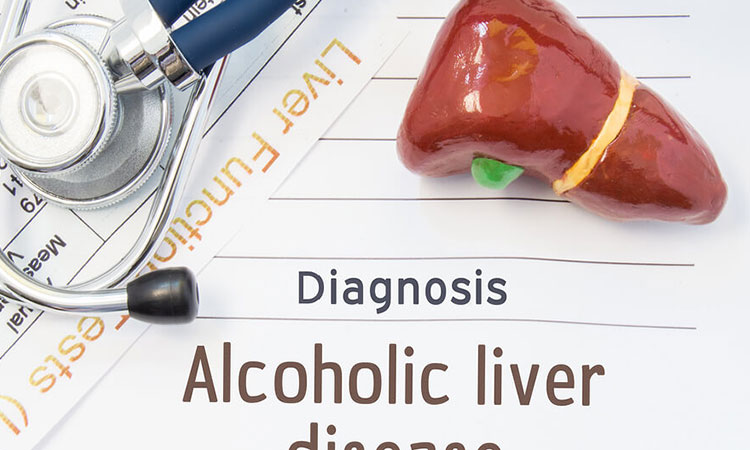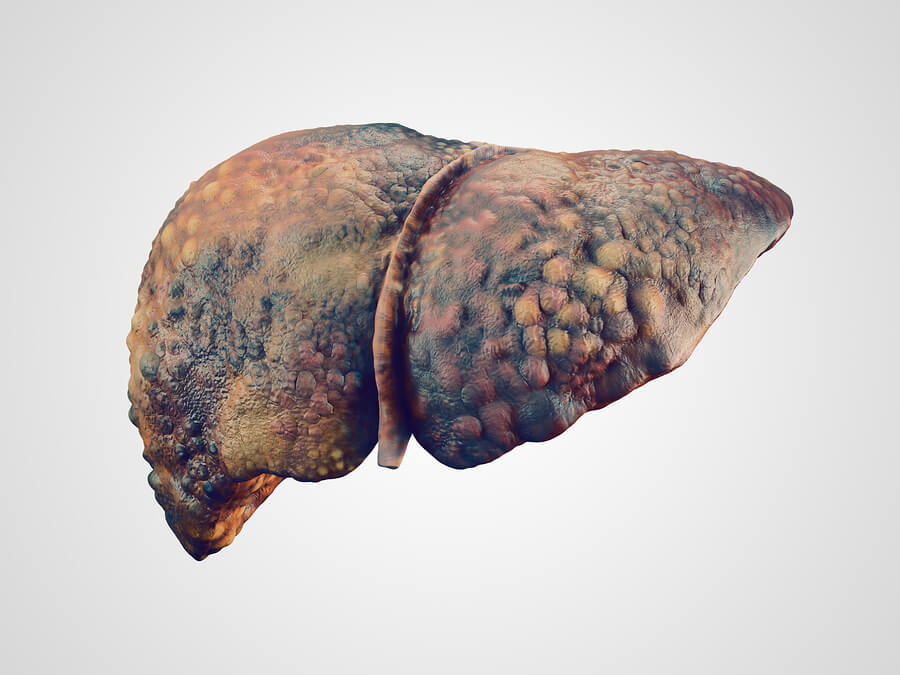
Signs of Liver Disease – The liver is the largest organ in the human body, helping it to digest food, store energy, and remove toxins.
There are several types of liver disease:
- Diseases induced by viruses, such as hepatitis A, B, C
- Diseases produced by drugs, poisons, or excessive alcohol consumption, such as fatty liver and cirrhosis.
- Liver cancer
- Hereditary diseases, such as Wilson’s disease and hemochromatosis
Symptoms of liver disease vary but often include swelling of the abdomen and legs, bruising easily, changes in the color of urine and stool, and jaundice (yellowing of the skin and eyes). Sometimes the liver disease is asymptomatic. Imaging and liver function tests can check for liver damage and help to diagnose liver diseases.
Alcoholic Liver Disease
Alcoholic liver disease is the medical consequence of repeated damage to the liver caused by excessive alcohol consumption, especially for prolonged periods. Many people have heard of the common signs of liver disease related to alcohol use, such as jaundice, fatigue and digestive problems.
Less commonly known signs of alcoholic liver disease include the following:
- Skin problems, such as itchiness, eczema, and psoriasis
- Adverse reactions to medications such as pain relievers or antibiotics
- Persistent heartburn and acid reflux
Also, alcohol abusers might notice a significant decrease in alcohol tolerance and will become intoxicated more rapidly than usual. Alcohol abusers might also experience more severe hangovers than usual as liver disease progresses.
Stages and Early Symptoms of Liver Disease in Alcoholics
There are four generally recognized stages of alcoholic liver disease, the signs and symptoms of which may overlap:
Alcoholic Fatty Liver Disease
Fatty liver disease is characterized by the accumulation of fat in the liver, resulting in swelling and impaired liver function. Alcoholic fatty liver disease can occur after just a brief period of excessive drinking. Outward symptoms are not usually present in this stage, although some may feel fatigued or notice discomfort in the upper right portion of the abdomen.
With the discontinuation of alcohol use, liver disease can usually be reversed at this stage. If drinking continues, however, damage to the liver will not recede and may lead to permanent disease.
Alcoholic Hepatitis
Alcoholic hepatitis can develop after a prolonged period of drinking. This stage involves inflammation and scarring, which prevents blood flow into the organ and slows its vital functions. Although alcoholic hepatitis might be diagnosed by a medical professional as “mild,” it is still a formidable condition that requires immediate abstinence from alcohol. Severe alcoholic hepatitis can even be life-threatening.
The mildest forms of alcoholic hepatitis may be asymptomatic. As the disease advances, however, signs and symptoms may include the following:
In identifying hepatitis, liver function tests will reveal elevated liver enzymes. Severe alcoholic hepatitis may cause fluid buildup in the abdomen, cognitive and behavioral changes, and liver or kidney failure. It is imperative that people with alcoholic hepatitis seek medical advice and intervention at this stage.
Alcoholic Fibrosis
The third stage of liver disease is fibrosis, which is characterized by an accumulation of proteins in the liver. Instead of filtering toxins and metabolizing proteins, they accumulate in the liver and result in fibrosis. There are multiple stages of fibrosis, ranging from mild to severe.
Alcoholic Cirrhosis

Cirrhosis of the liver is not reversible, though refraining from alcohol use may limit further damage and improve some symptoms. In this type of liver disease, significant scarring in the liver is present. Individuals who have alcoholic cirrhosis will most likely be entirely dependent on alcohol and require specialized addiction treatment and tremendous support.
Unfortunately, a person with alcohol-related cirrhosis who does not abstain from drinking has less than a 50% chance of living for five more years.
Non-Alcoholic Liver Disease
Non-alcoholic fatty liver disease (NAFLD) is a condition caused by an excess of fat accumulating in the liver, despite the absence of alcohol abuse.
Damage caused by NAFLD, however, presents with signs and symptoms comparable to alcoholic liver disease. NAFLD is an umbrella term, and causes may include obesity, diabetes, cancer, malnutrition, injury or infection, drug overdose, genetic disorders, high amounts of fat in the blood, and more. Fatty liver is most often asymptomatic and is reversible with lifestyle changes.
A more advanced stage of NAFLD is a condition known as non-alcoholic steatohepatitis (NASH). This disease is hallmarked by fat growth associated with liver cell inflammation and varying degrees of scarring. NASH is considered to be a serious condition and may lead to significant scarring of the liver as well as cirrhosis.
Other Warning Signs and Symptoms
Recent research has found new molecules that may advance treatments for liver disease. Experiments, tests, and procedures are continuously being explored. Still, early detection remains the best treatment.
Some of the signs of early liver damage include the following:

When early liver damage begins to develop, it can no longer protect the body optimally against harmful chemicals. The body becomes less able to efficiently digest food, remove toxins, and send nutrients where they need to go.
An impaired liver may also present with the following signs:
- Bruising or bleeding easily
- Stomach discomfort after eating, such as bloating, gas, or nausea
- Persistent headaches, heartburn, and acid reflux
- Difficulty losing weight or unexplainable weight gain
- Common household chemicals, such as bleach, perfume, gasoline, paint, or cleaning products, cause a severe reaction
In addition to the symptoms of NAFLD, those with liver damage due to alcohol often experience tremors.
Why Abstinence is Key
Advanced medical tests and research have put together a picture of what abstaining from alcohol can do for preventing, halting, or reversing liver damage. Indeed, alcohol abuse is one of the primary causes of liver damage, and alcohol-induced liver disease is the main contributor to chronic liver disease in the West.
Once a person is diagnosed with alcoholic liver disease, abstaining from alcohol is the only chance of recovery. Moreover, anything that imperils the astounding regenerative ability of the liver puts a person’s life in danger. The further a liver disease advances, the more serious it becomes.
According to the American Liver Foundation (ALF), up to 20% of heavy drinkers will develop alcoholic liver cirrhosis from repeated, excessive alcohol consumption. Liver cirrhosis is irreversible and incurable, but treatable.
Getting Help for Signs of Liver Disease
The recommended daily limits for alcohol use are no more than one drink each day for women and two for men. If you or someone you are close to frequently exceeds these recommended daily limits or is exhibiting early signs of liver disease, it is vital to intervene as soon as possible.
Seeking comprehensive medical and mental health treatment for addiction is important. Quitting alcohol can be an incredible challenge and detoxing from alcohol at home can be life-threatening.
Midwood Addiction Treatment specializes in the treatment of alcoholism. We employ an integrated, evidence-based approach that includes services, such as psychotherapy, counseling, and group support, essential to the recovery process.
If you or someone you love is suffering from an addiction to alcohol, contact us as soon as possible and find out how we can help you achieve abstinence, prevent relapse, and reclaim the healthy and fulfilling life you deserve!